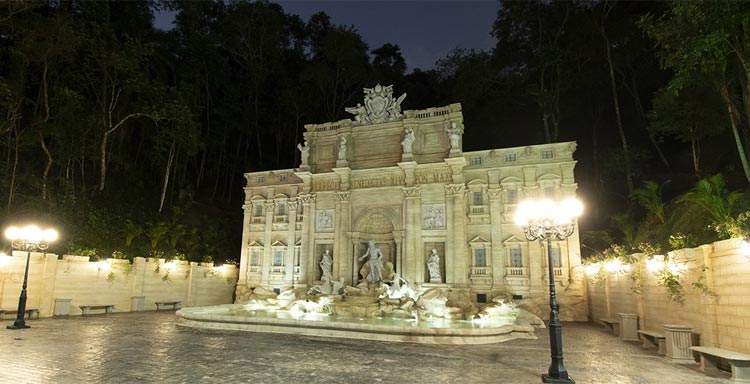In Brazil they build a replica of the Trevi Fountain in the midst of palm trees
Does it make sense to copy works of art? Or rather, does it make sense to copy works of art, be they sculptures or paintings or buildings, and use the copy in its own context to beautify it as in the original location? The question arises these days after Brazil built a copy of the Trevi Fountain on a smaller scale: in fact, it is 40 percent the size of the real one (11 meters high and 20 meters wide). A bit like Totò and Peppino, someone must have bought the famous monumental fountain from them to take it to... Serra Negra, near São Paulo. Which then, ’near’ in Brazil compared to Italy is another concept. But no Fellini will come to Serra Negra to shoot a film simply because ours is the society that rewards and values the original, the primacy. The artist who had the idea and realized it first. Yet the official motivation of the Brazilian municipal administration is precisely to get publicity and attract tourism by combining the idea of the world’s most famous fountain with the fact that it is a spa resort.
“Serra Negra has won a work inspired by one of the most famous Roman monuments,” the São Paulo Tourism Secretariat tweeted last Friday with a grand unveiling, perhaps hoping to repeat the success of cities born from nothing like Las Vegas made of copies of famous monuments. “The work is an exact replica of one of the most visited monuments in the world, it will increase the flow of tourists to Serra Negra and generate employment and profits as a result. It is also a tribute to Italian culture, with which our municipality has strong ties thanks to the massive immigration from Italy in the last century,” explained Tarcio Cacossi, communications director of the Serra Negra Prefecture. The construction lasted one year for an expenditure of about 300,000 euros. Little or a lot compared to the design by 18th-century architect Nicola Salvi? Let’s say right away that the statues instead were made of silicone and plaster prints, covered with fiberglass.
And the point is this: in the age of digital technology where between 3D printers and graphics programs one can reproduce a sculpture or painting thanks to a computer without any intellectual contribution or skill of one’s hands, we can ask ourselves what gives value to art? What gives value to a carved stone or a colored canvas? The author? The skill of execution? The primogeniture of the idea?
Why is the copy of the David in Piazza Signoria less valuable than the one at the Accademia? The Veiled Christ in Naples today reproducible by a machine in exact copy with equal beauty why should it be worth less? If it is because of the chromatic result of a painting both Titian’s original canvas and that of a print should be the same no? Perhaps value is also given by the sense with which man does what he does?
When I was making one of my first visits to Siena the guide explained to me that in the facade of the Duomo even the smallest angels inserted in the tympanum had precious stones in their eyes. And from underneath it was impossible to see them. They did it for the total value of the meaning of what they were building. He told me, that guide, this example. Imagine in the Middle Ages while they were building it. Dust and sweat on the workers who labored with their heads down. They asked one, “What are you doing?”, “Can’t you see?” replied the man, rudely, without even raising his head. “I’m killing myself with toil.” Moving on, he asked a second worker who was breaking stones like the first and asked him the same question, “What do you do?”, “Can’t you see? I work from morning to night to support my wife and children.” He asked a third man the same question who answered him smiling proudly, “Can’t you see? I am building a cathedral.” Perhaps what changes the meaning of all things and their value is the spirit in which we do them.
Pictured: the replica of the Trevi Fountain. Photo: Circuito das águas paulistas
 |
| In Brazil they build a replica of the Trevi Fountain in the midst of palm trees |
Warning: the translation into English of the original Italian article was created using automatic tools. We undertake to review all articles, but we do not guarantee the total absence of inaccuracies in the translation due to the program. You can find the original by clicking on the ITA button. If you find any mistake,please contact us.





























